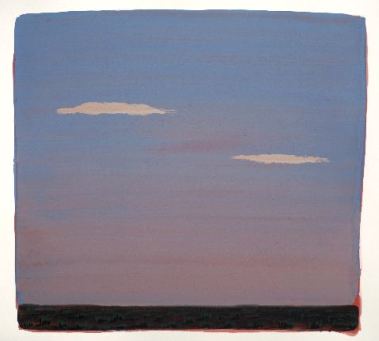Drew Daly, who is exhibiting at the Greg Kucera Gallery through Nov. 14, received an MFA from the University of Washington in 2004. Timothy Brown graduated with the same degree from the UW two years later.
About the impression Daly made in the MFA exhibit at the Henry, I wrote:
Just inside the galleries are two chairs by Drew Daley that aren’t
chairs at all. Keep looking at them, and they turn into rarified
paintings, all scraped down and burnished to a soft green glow. They
impersonate the useful as tribute to the uselessly beautiful.
Later I learned that the two chairs started as one chair. By carving it, Daly doubled its presence. That piece:
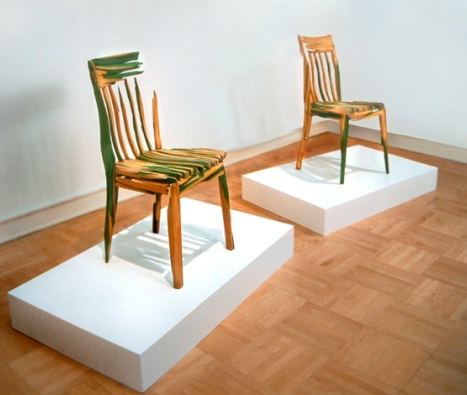 About Brown I wrote:
About Brown I wrote:
Timothy Brown’s massive chunk of yellowing resin has four (schoolroom) chairs painted inside it. I love their spindly legs. With their platter tops and the ghostly contrivance of the resin layering, they are memories frozen in time.
That piece:
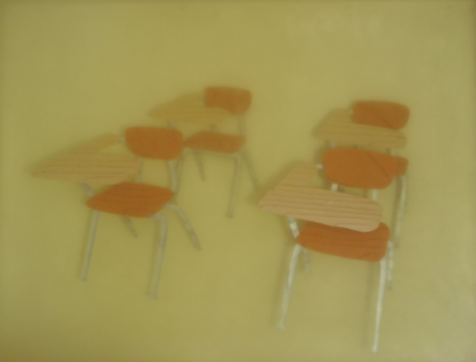 And more recently:
And more recently:
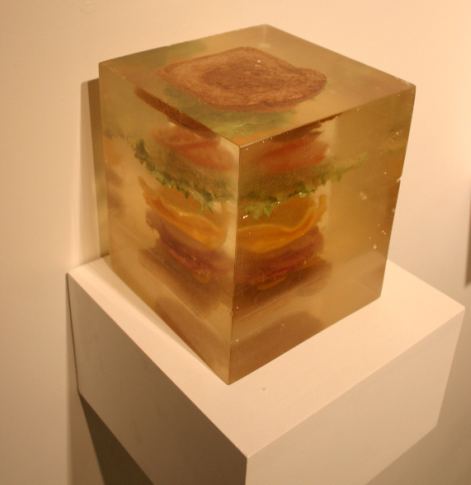 These artists were familiar with each other’s work, at least
These artists were familiar with each other’s work, at least
peripherally, as their studios in the time their schooling overlapped after graduating were in the same
building. Only Brown was working with resin.
As part of Daly’s current exhibit, he too has turned to resin.
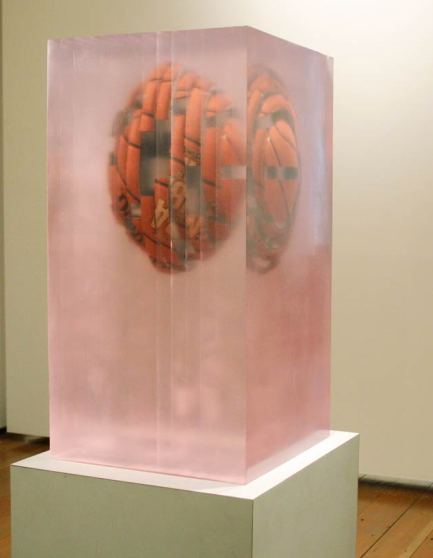 Circulating around town are rumors that Daly plagiarized Brown. About Daly’s current show, I wrote:
Circulating around town are rumors that Daly plagiarized Brown. About Daly’s current show, I wrote:
The dropped ball never hits the floor in Drew Daly’s resin sculptures, which are surely a tribute to Jeff Koons’ Three Ball Total Equilibrium Tank from 1985 in particular and to Lucas Samaras in general…Daly makes art as if the world were a bellows, breathing in and out. On the exhale, faces, furniture and (most recently) sports equipment pull apart in fragments. On the inhale, they reform, but not necessarily in their original shapes. Two chairs become one, or one becomes two. Twelve fuse as if through an electrical current. A chest of drawers bends and flares. (more)
Brown’s work didn’t come to mind when writing that review. If it had, I would have been unlikely to mention it. There’s a material similarity, but the focus is entirely different, Daly honing in on fracture and Brown on floating sense world memories.
Intentionally or unintentionally, Daly might well have borrowed the idea of resin casts from Brown, but he might also have been thinking of Rachel Whiteread. Art comes from art. What matters is not the what of materials but the how of their use.
In regard to who did what when and thinking strictly of subject matter, don’t both artists owe Jack Daws?
Daws’ Hollow Reed from 2001:
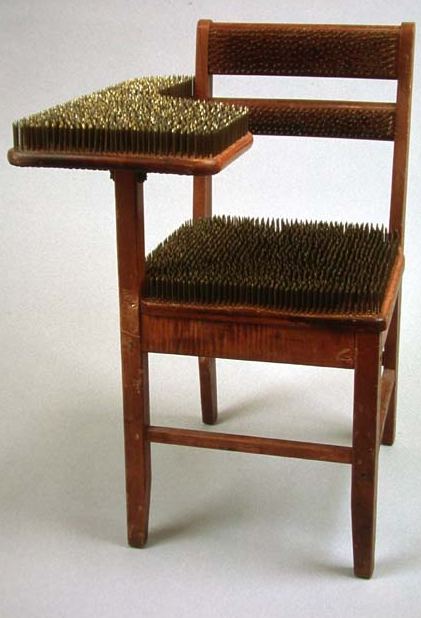 No.
No.
Does Daly need to acknolwedge Daws’ Basketball Watermelon from 2002?
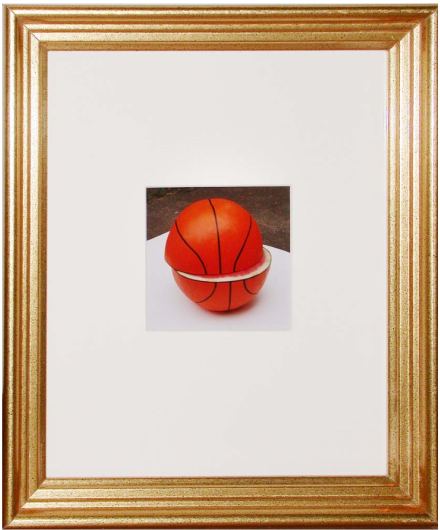 No. Brown deserves a far larger career than he has had to date. Daly did not, however, steal his play or render it invalid.
No. Brown deserves a far larger career than he has had to date. Daly did not, however, steal his play or render it invalid.



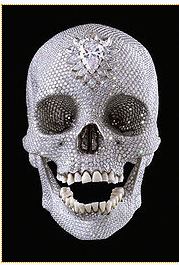 Artists from
Artists from 
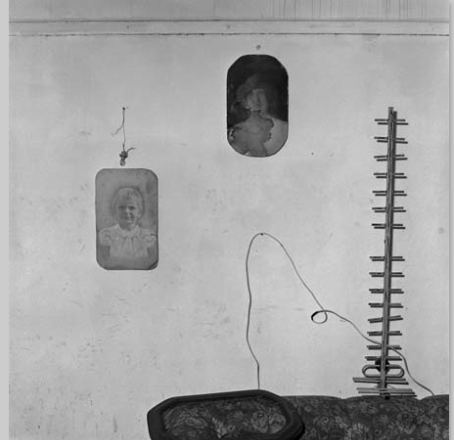
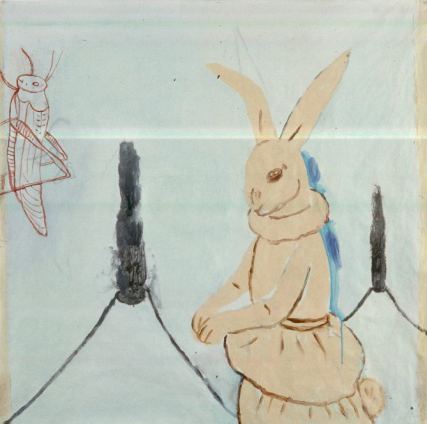 Now hear this: Ken Kelly at
Now hear this: Ken Kelly at 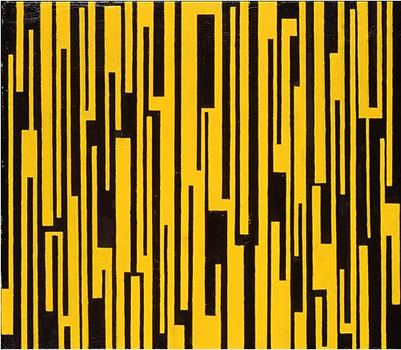


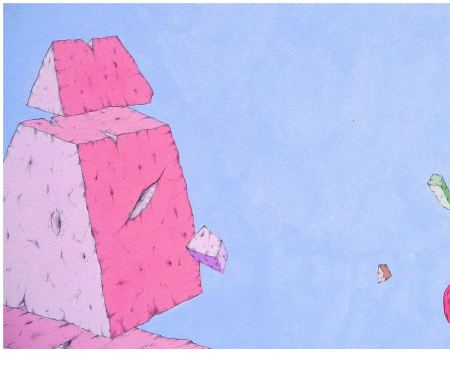 Haygood began as a printmaker and still paints in a modified printmaking style, incising form into wood panels and painting in layers through a process of erasure, laying on and partially wiping out. When he began painting earlier in the decade, acrylics in a mineral varnish woke up his
Haygood began as a printmaker and still paints in a modified printmaking style, incising form into wood panels and painting in layers through a process of erasure, laying on and partially wiping out. When he began painting earlier in the decade, acrylics in a mineral varnish woke up his

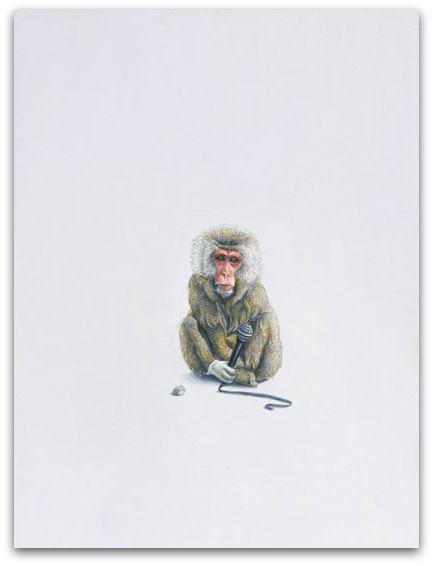
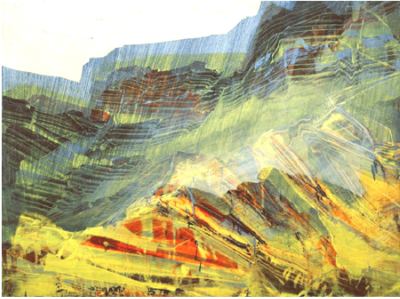 I
I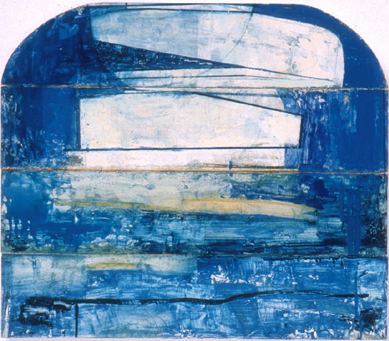 I
I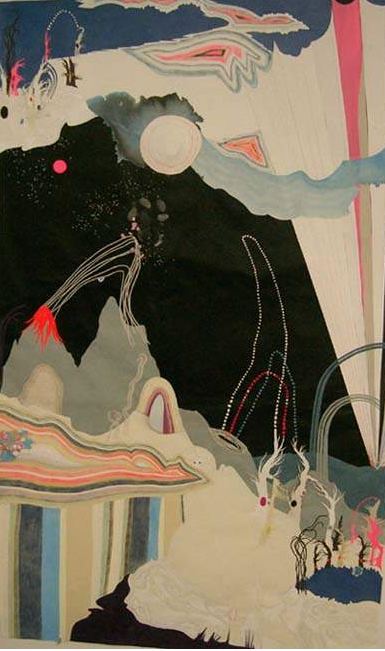 I hate watching people look at my pictures. I never like anything about the way they do it.
I hate watching people look at my pictures. I never like anything about the way they do it.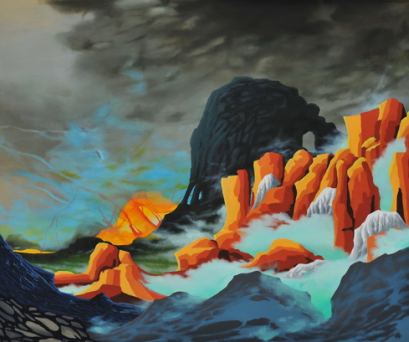 My
My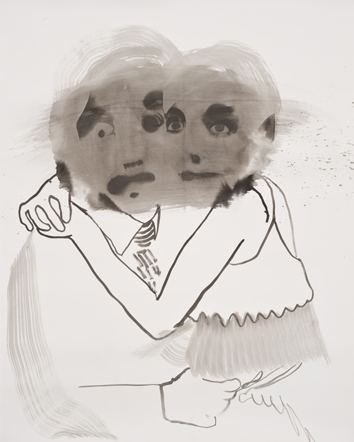 I don’t think of my pictures as small – I think of them as efficient.
I don’t think of my pictures as small – I think of them as efficient. 